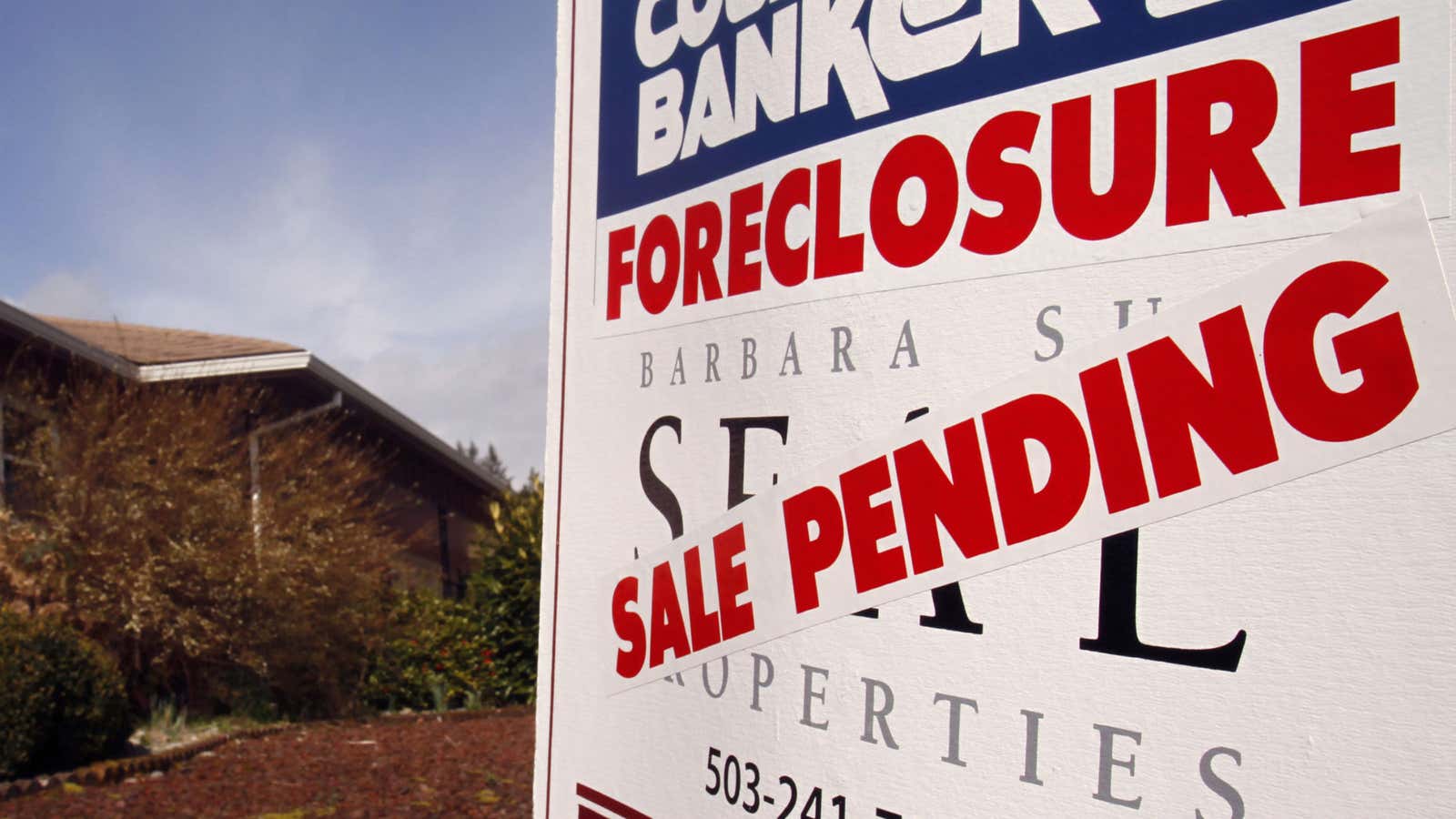Recent housing data are noisy, and often conflicting—are we back to normal, or in another bubble? The truth is, compared to what we’ve been through, we’re much better off.
Nationally, home values were up 5.4% year-over-year at the end of May, and are expected to rise another 2.9% over the next year. But even as prices rise, home values largely remain below their pre-crash peaks. Currently, the median home in the US is valued at $172,300, down more than 12% from peak. Interest rates on a 30-year, fixed-rate mortgage, while up from the record lows of a year ago, are still incredibly low at about 4%.
These low prices and low rates are driving demand. According to a recent survey by Zillow, a real estate marketplace, more than 4 million current renters expressed a desire to buy a home within the next year.
And yet we aren’t back to normal, not by a long shot.
It’s been five long years since the worst of the recession. So why hasn’t the housing market normalized yet? For three main reasons:
- The enormous and widespread decline in home values during the bust was unprecedented, and is still impacting the market.
- Mortgage interest rates are historically low, boosting affordability nationwide and helping spur demand.
- The huge decline in home values meant a huge spike in negative equity. It is near impossible for underwater borrowers, those owing more on their mortgage than their home is worth, to sell their home. This is constricting inventory while low prices and low rates goose demand.
These factors are slowly normalizing, but still represent major distortions in a market that remains unbalanced between buyers and sellers, homeowners and renters.
Almost one in five homeowners with a mortgage is underwater. Roughly double that number are in “effective” negative equity, either underwater or with so little home equity they can’t sell their current home and have enough left over to afford a new one. This impacts the number of homes for sale and the number of qualified buyers. This, in turn, affects the number of new and existing home sales, which have begun to tick up but remain well below normal.
There are also fewer people owning homes. The national homeownership rate fell to a seasonally adjusted rate of 65% in the first quarter, the lowest level in 19 years. The household formation rate is also sluggish as younger people live with their parents longer. In the first quarter, new households formed at roughly one-third the normal pace.
Most new household are turning to rent, which have been raising despite drop in home values. Since 2000, rents have grown by 52%, twice the pace of wage growth over the same time. Currently, in 90 large metro markets, renters are spending more than 30% of their income on rents.
Rising rents, coupled with high student debt, make it very difficult to save for a down payment on a home. To get the best terms, borrowers generally need to put 20% down. On the median $172,300 home, that’s more than $34,000, a large chunk of change for young buyers whose incomes aren’t growing.
Rental affordability is already an issue, and mortgage affordability is becoming one. While homes are mostly affordable nationally, in a few markets, especially the Bay Area and Southern California, homes are already unaffordable compared to historic norms, even with very low mortgage rates. Home buyers in these areas will pay a larger share of their incomes today on a mortgage than they did during the pre-bubble years, and that share will grow as rates rise—which they inevitably will do. For homes in these areas to remain affordable, wages will need to grow much faster or home values will have to come down to more attainable levels.
Finally, as mortgage rates rise, homeowners with rates in the 3% range today may be reluctant or unable to buy again when rates are above 5%. Slowing home value growth means negative equity will recede more slowly. These factors will dampen the number of home sales.
The bounce off the bottom we’ve seen has been overwhelmingly positive, but the housing market is hardly normal or balanced. The next few years will be marked by some localized volatility, a tough buying environment and slower growth.
